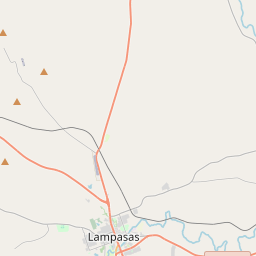Horrell-Higgins Feud






The Horrell and Higgins families were among the early settlers of Lampasas County. Tom, Mart, Merritt and Sam Horrell were accused of many crimes, including cattle rustling and murder. Pink Higgins was a cattleman and trail driver who, in 1876, began accusing the Horrell brothers of stealing his cattle. On January 22, 1877, Pink Higgins shot and killed Merritt Horrell in the Gem Saloon. This was the beginning of a six-month battle between the Horrell brothers and Pink Higgins, Bob Mitchell, Bill Wren and their followers.
On March 26, Tom and Mart Horrell were ambushed on their way into Lampasas. Captain John C. Sparks of the Texas Rangers went in pursuit, but no one was captured. Higgins remained a fugitive, but eventually surrendered and was ordered to appear in court.
On June 4, the Lampasas County District Clerk's Office was burglarized and District Court records were destroyed. Three days later, the biggest battle of the feud took place on the public square in Lampasas; one man from each side was killed.
Major John B. Jones, commander of the Texas Ranger Frontier Battalion, came to Lampasas and sent Sergeant N. O. Reynolds and a company of Rangers out to capture the Horrells. The brothers were arrested and agreed to make peace by sending a letter of reconciliation to the Higgins party. This treaty was the formal end to one of the worst feuds in Texas history. What was perhaps the true termination of the feud came in 1878 in the town of Meridian, when Tom and Mart Horrell were murdered in their jail cell by a vigilante mob. Sam Horrell left Texas, resettled in Oregon and died of old age. Pink Higgins eventually settled near Spur in West Texas and went to work as a range detective. (2000)
As one of the most visible programs of the Texas Historical Commission (THC), historical markers commemorate diverse topics in Texas history, including: the history and architecture of houses, commercial and public buildings, religious congregations, and military sites; events that changed the course of local and state history; and individuals who have made lasting contributions to the state, community organizations, and businesses.
The University of Texas at Austin, founded in 1883, is one of the largest universities in the United States and has produced many notable alumni, including several U.S. presidents.
In 1852, Lampasas County was officially established, named after the Lampasas River that runs through the area. The county quickly became a prominent agricultural region, with cotton being the primary crop. The arrival of the Texas and Land Company railroad in 1882 further stimulated the local economy, as it facilitated trade and transportation in the area.
During the late 19th and early 20th centuries, Lampasas County also experienced economic growth due to the discovery of mineral resources. Manganese and zinc mining industries played a significant role in the county's development. Additionally, the city of Lampasas became a popular health resort destination, thanks to the therapeutic value of the local natural springs.
Throughout the years, Lampasas County has faced its fair share of challenges. The region went through difficult times during the Great Depression, with the decline of the agricultural industry. However, the county managed to bounce back and diversify its economy, embracing tourism and other industries. Today, Lampasas County remains a vibrant community with a blend of historical charm and modern development.
Lampasas County Timeline
This timeline provides a condensed summary of the historical journey of Lampasas County, Texas.
- 1854 - Lampasas County is founded and named after the Lampasas River.
- 1872 - The town of Lampasas becomes the county seat.
- 1882 - The Gulf, Colorado and Santa Fe Railway is completed through the county.
- 1885 - The first oil well in central Texas is drilled in Lampasas County.
- 1922 - The Hancock Springs Hotel, a popular health resort, is built.
- 1949 - The Fort Hood military reservation is established, impacting the county's economy.
- 1960s - The construction of the Highland Lakes dams brings tourism and recreation to the area.
- 1990s - The county experiences population growth and increased development.